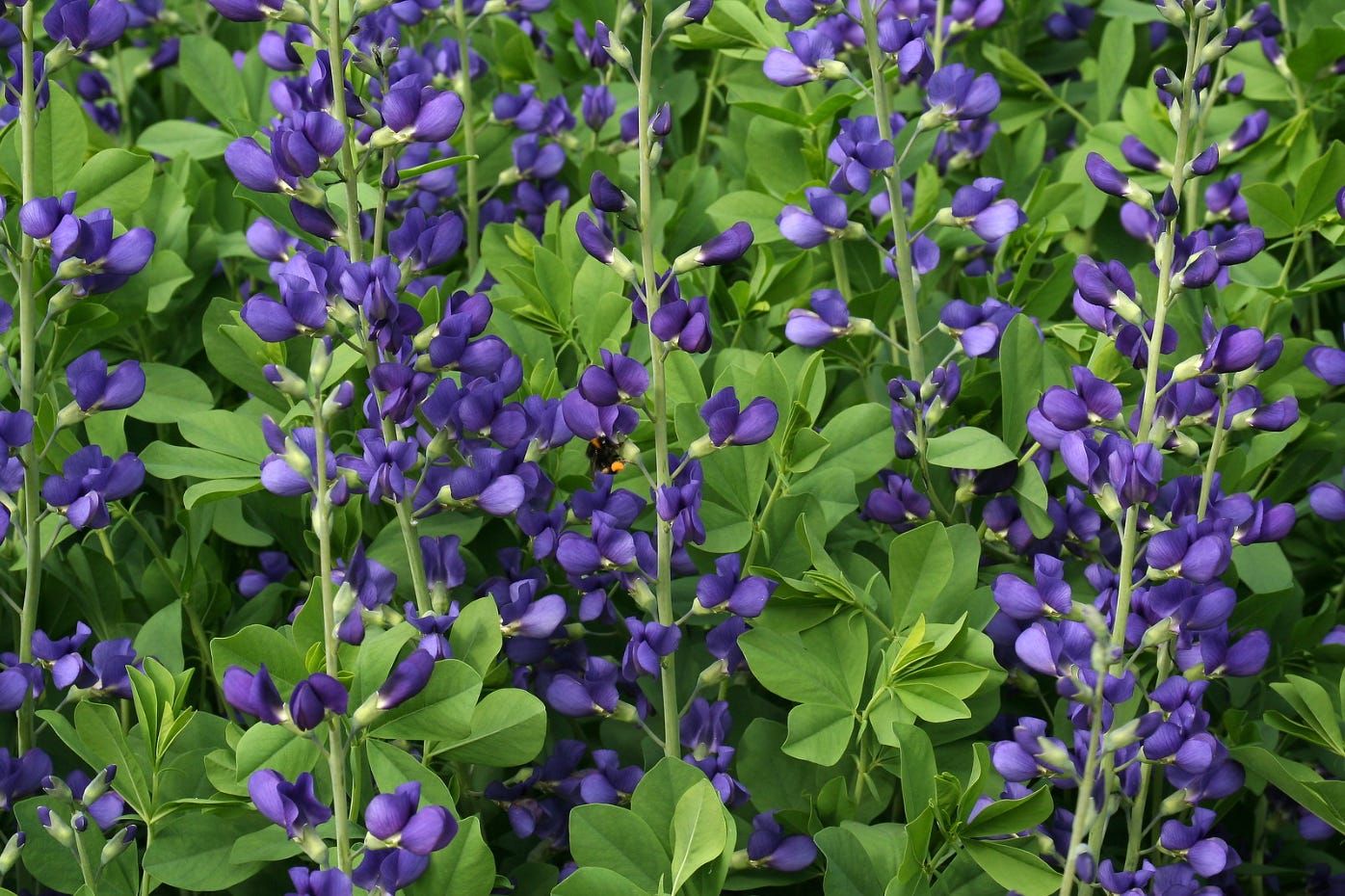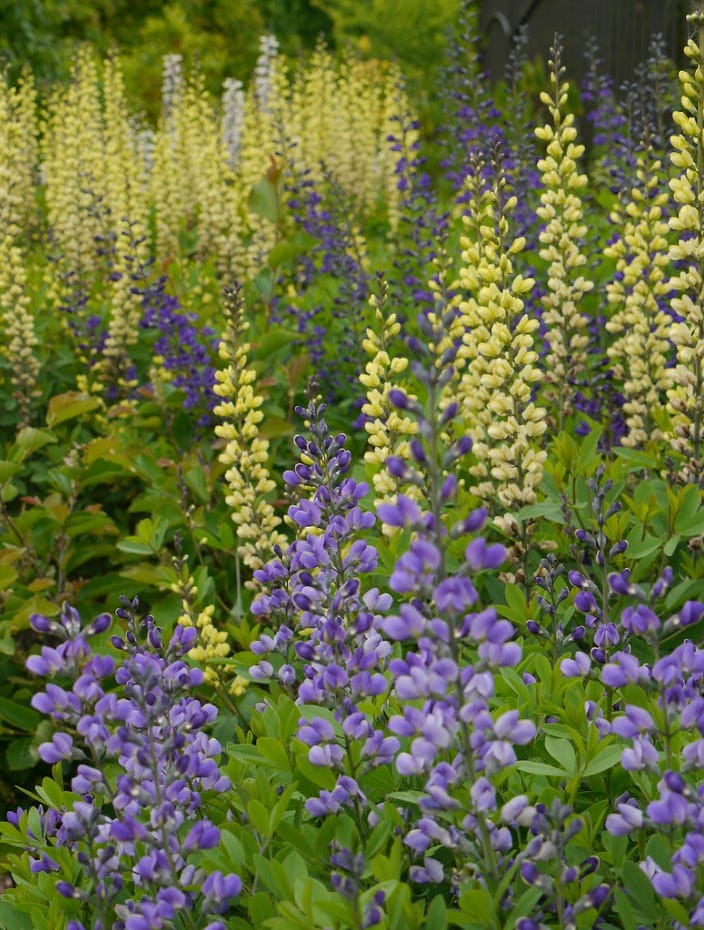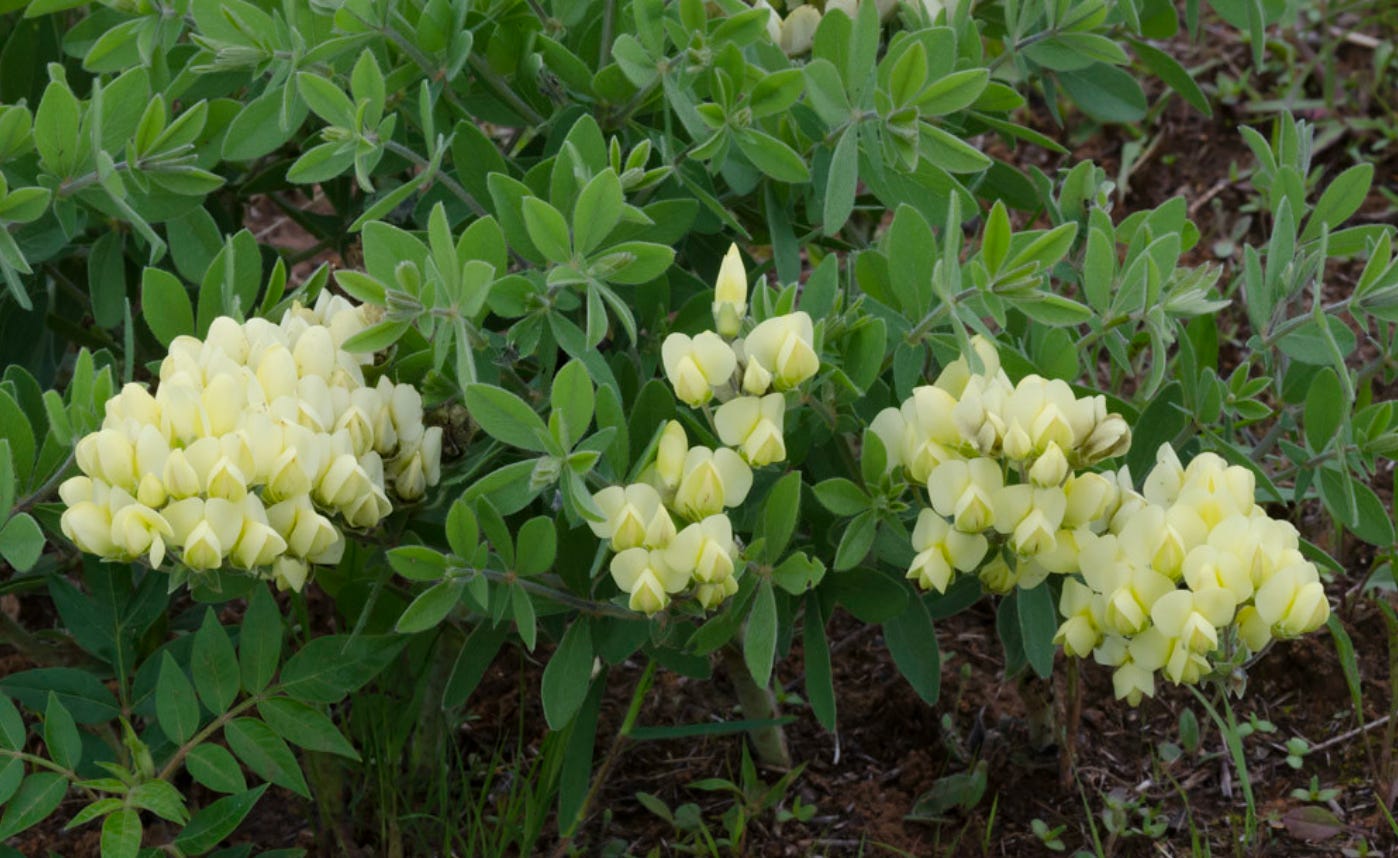🌎 native plant edition: meet the baptisia 🌎
plus: be careful what you trade for time, a cool native plant resource, & garden updates
Be like the fox
who makes more tracks than necessary,
some in the wrong direction.
Practice resurrection.”
― Wendell Berry
Today is a day I do not feel like writing. Today is a day I show up for practice and remember this is a practice of being aware of my life.
Last week, my friend Tiffany and I talked about always trying force More Time, even though it is finite and something we do not control. When we push more Time into Now, we borrow it from Later. It is an unnatural arrangement of the set time we are allotted. We sleep less, and accept the trade of worse health or fewer years.
I want to control time and feel that I can master productivity inside of a day. I want to know that if I work hard enough at my to-do lists, I can “use” my time “wisely.” I have identified an enormous part of my chronic stress recently: I have an unrealistic expectation of how many tasks can be done in a day. Each day begins with hope, is rushed forward, and ends in not-satisfaction. Expectation, yet again, steals even more joy than comparison.
It is not easy to practice relaxing into the true capacity of what a day really can hold, because so many others want to say that there could be More. And perhaps they are right but the cost is higher than I am willing to pay.
This week’s activities were…
Flipped some of my beds from spring greens to dragon tongue beans, basil, heat-tolerant carrots, beets, tokinashi turnips, and tomatoes
Went to the library and browsed for the first time since college
Staked all the tomatoes
Planted 1500 year old cave beans and more basil
Finished a garden landscape install, which was very fun and I cannot wait to take photos when everything is in full bloom and has settled in a bit
Started up the next round of microgreens
Bought packaging for microgreens + small produce items
Began a neighborhood produce list, where I send out something like this on Wednesdays:
reading round-up of best growing-related WITI emails lately
I like this very broad newsletter called “Why Is This Interesting” and recently the natural world has been a topic of interest.
this week’s native plant highlight: the baptisia (wild indigo)
I first noticed baptisia / wild indigo / false indigo when we moved to North Carolina. If you are looking for more native pollinator perennials for your space, this is an outstanding option and one of the easier ones to find — I’ve seen them at Franks Perennial Border Nursery consistently, and they pop up at Myers, Homestead, Elderberry, etc.
Baptisias are a great “filler” flower for large garden areas where you want a full, lush space. I love the overflowing, multi-layered English cottage flower garden look but learned the painful way that most of those flowers are meant for — surprise! English gardens where the soil is more moist and rich.
I am always looking for a bushy-but-delicate perennial that is native (and will thrive here) but still complement a cottage-style bed. Baptisias are perfect. They grow to be 2-5 tall (depending on variety) and 2-3 feet wide, and their leaves are unique. They also create interesting seed pods later in the year. If you add one (or many) to your space, consider putting them in the middle or back of the bed, as they will grow tall and are difficult to transplant or divide and move.
A few more reasons to love them:
Baptisia is in the legume family, which means it transforms unavailable nitrogen in the soil to available nitrogen. (It looks a similar to the Lupine - also a perennial legume - which has an even tighter bunch of vertical flowers.)
Host plants to a lot of butterflies (orange sulphur, clouded sulphur, frosted elfin, eastern tailed blue, hoary edge, wild indigo duskywing)
Very deep, large root systems which makes them drought/heat resistant once they are established.
Deer resistant.
Can grow in neutral beds (6.8-7.2) BUT they also thrive in native acidic soil too
While all of the species are primarily native to the Southeast, they each have multiple varieties that are unique to different states or sub-regions; so look for the one in your area! There are also two breeders that have created well-known hybrid lines (Decadence and PrairieBlues) that add even more color to the world of baptisias and there is no shame in selecting them. ✨
Baptisia alba - This one is white!
v. alba - Southeast
v. macrophylla - Midwest
Baptisia australis - This one is blue!
v. abbarans - Georgia, North Carolina, Tennessee
v. australis - All states east of Mississippi, most often for sale
v. minor - West of the Mississippi, and half the size (18-24”) of the others
Baptisia Bracteata - This one is creamy yellow!
v. bracteata - South Carolina
v. leavicaulis - Louisiana and Texas
v. leucophaea - Midwest
Baptisia sphaerocarpa - This one is bright yellow!
v. sphaerocarpa - lower Midwest, Gulf states
Hybrids - There are also several stunning hybrids that have been developed to add color, such as…
tracking endangered species and ecosystems
A *fascinating* resource I stumbled upon this week is a site where you can look up how much jeopardy a native plant variety is in. This link will show you that the Tall Blue Wild Indigo is T2 - Imperiled, just one step away from Critically Imperiled, before it becomes extinct. And this link shows the White Wild Indigo, which is native to a different combination of states.
Until next week — good luck with your heat wave or your wildly late snow storm; it seems those are the two experiences we get to choose from this weekend! 🥵🥶
- Lauren
“The mercy of the world is time. Time does not stop for love, but it does not stop for death and grief, either.”
― Wendell Berry



















